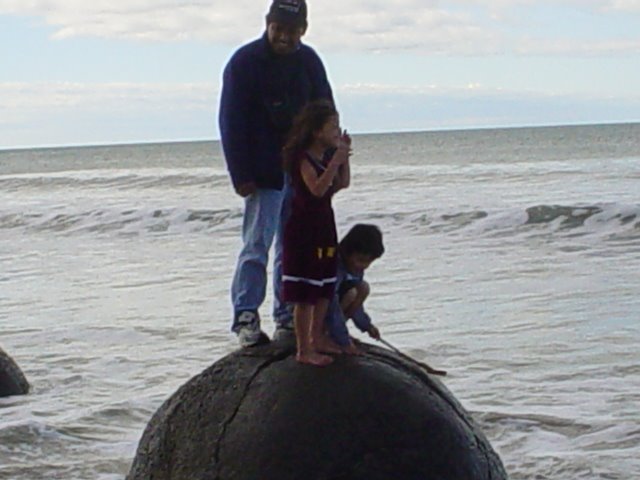

Goldman warns of fault lines in M'sian economy
Loose monetary policy, stretched consumption cited
By S JAYASANKARAN in italics
Business Times
My comment as below.
THE Malaysian economy appears robust but 'fault lines are beginning to appear', investment giant Goldman Sachs has warned. Among the cracks: stretched consumption, disappointing private investment and a loose monetary policy.
Stretched consumption: The economic growh has not tranlate into increased income for ordinary Malaysian lately. With prospect for more wages nil, Malaysian are holding back on committing themselves on big ticket consumer items. It is also true that economic growth has not benefit the lower income group. Their wage bargaining power diminished with the number of foreign labour in the country. Ask any factory worker, cleaner and general labourer, how much they are getting monthly, the answer would still be RM300-$500, or not far from that range. Even though we were as proud as a cockerel trumpeting high economic growth, the benefit of this growth has not “trickled down” (a phrase used by Rafidah Aziz a few years ago to support government action awarding lucrative contracts to well connected individuals and helping create a few rich Malaysians, she said this would have the trickle down effect).
Dissapointing private investment: After a few years of loose monetary policy, almost all profitable investment has already been made. Investor would not commit more money without being sure of making reasonable return on their investment. They would rather invest overseas in countries with higher prospect of growth.
Loose monetary policy: This policy is contributing to economic growth for the past few years, but now has started to contribute to higher inflation, undoing the gain of the past few years. This is also resulted in negative gain for fixed deposit investor. With intervention rate of 3%, and inflation rate of 3.5%, you are losing money parking your cash in the bank. This is also the reason why our foreign reserves starting go down for the past month. Hot money has started to flow out.
In a report issued on Friday last week, Goldman Sachs echoes many of the sentiments privately expressed by Malaysian businessmen, who say the economic numbers don't translate to real wage or employment growth.Companies are repatriating their cash overseas to earn higher return rather than investing in more capital in Malaysia. Some Malaysian companies have gone global, investing in low wage high growth countries, like China and India. In business sense, at current situation, the economy has reached its full potential. In the four quadrant of business cycle we have reach the cash cow section. Its time to milk the cow. If we don’t change and improve our infrastructure to increase our efficiency, the road ahead is difficult indeed; we are on the road to decline.
Indeed, the disinterest shrouding the Malaysian economy has spread to the markets, with the Kuala Lumpur stock exchange recording one of the worst performances in Asia this year.The stockmarket is like a crystal ball, where we can gaze into the future. If the stock market is declining, you would be sure that one year down the road the economy would be declining into recession.Current stock price is the total value of its future dividends discounted at current market return. Which imply that stock price would go down if either interest rate goes up and/or future dividend go down. How much does interest rate go up lately? Only 30 basis point.
The Goldman Sachs report notes that the multiplier effects of rising capital expenditure by companies in Malaysia appear to be absent. 'A lack of business expansion will constrain employment and wage growth which is needed to sustain the string consumption trends,' it says.
Indeed, the report questions whether the consumption boom that has fuelled the economy for five straight years will peter out. Malaysian household debt levels 'look dangerously high' relative to per capita income on an international basis, it notes.
Malaysia's ratio of debt to gross domestic product is close to 50 per cent - an increase of 20 percentage points over 10 years. On a per capita basis that's slightly ahead of Taiwan and equivalent to Japan and the UK.
His is basically saying that prices are expected to fall in the near future as the economy move into low growth mode. Currently supply of goods (housing, capital equipment consumer goods and big ticket items) has met demand. There are signs of oversupply in certain markets like housing and passenger car market. If you scour newspaper rental housing section and house for sale section, we would notice that both prices on offer have come down significantly fron a year ago. The same can be said of car prices. Second hand car prices are lower than a year ago.
The report also warns that the debt levels do not include lending by non-banks - hire purchase companies, pawnshops and money lenders.
Malaysia's household debt level is 'quite out of sync with its level of per capita income', according to Goldman Sachs.
We are all stretched financially. No prospect of increasing income, so we concentrate on paying off debt.
The report also says Malaysia's balance of payment surplus has turned into a deficit, which in October it estimated to be around RM17 billion (S$7.6 billion) on the capital account.
The reason: impatience with the ringgit's non-appreciation leading to hot money getting out of ringgit assets.
The report warns that outflows could increase as locals join the exodus with the lifting of capital controls for Malaysians. These considerations, it says, 'have been accentuated by a growing sense that the policy leadership lacks vision'.
Goldman Sachs says that, left to market forces, the ringgit would have depreciated to 3.84 to the greenback, compared with its current slight appreciation to 3,78.
It says that if the market tests the 3.80 barrier, 'the process is unlikely to be positive for asset prices'.
Goldman Sachs asserts that the central bank's monetary policy is too loose, noting that Malaysian inter-bank rates 'are even lower than Singapore now'. It predicts that the central bank will raise its overnight policy rate, but only by 30 basis points.BNM has no choice, if they increase the interest rate higher than 30 basis point, quite a number of Malaysian companies will report higher losses (or lower profit) for the next quarter, due to higher provision of interest payment. This in turn will have a severe negative effect on the stockmarket and overall asset prices. Pushing the economy further and sooner into recession. The tactic of increasing interest rate by a little bit is similar to holding off recession at bay – at the cost of higher inflation. They are hoping that higher inflation will keep the economy revving in the short term.








